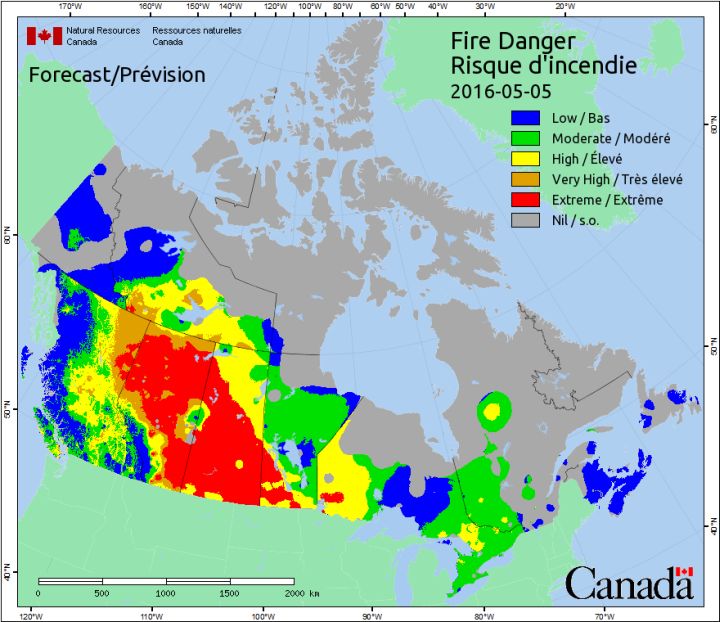The Fort McMurray wildfire has grown to 85,000 hectares in size, Alberta Premier Rachel Notley said Thursday morning. And while more resources are on the way to help in the battle, Chad Morrison, senior manager with Alberta Wildfire Prevention said air tankers are not going to stop the fire – rain is desperately needed.

“To be direct, this is what we would call extreme fire events that would happen in the most extreme conditions and the rarest of conditions,” Morrison said.
“Let me be clear, air tankers are not going to stop this fire. This fire is an extreme fire event. It’s going to continue to push through these dry conditions until we actually get some significant rain to help us.”
Watch below: Ongoing video coverage of the Fort McMurray wildfire
Temperatures in the region were cooler Thursday, hovering around the 17°C mark. That’s much cooler than the 30°C temperatures experienced in the area over the past several days.
While the cooler temperatures will likely be a relief to the men and women on the ground battling the blaze, Global Edmonton chief meteorologist Jesse Beyer said it will not help stop the fire because it’s not the temperature of the air that’s the issue for the fire, it’s the moisture content.
The relative humidity values in Fort McMurray have gone up because temperatures have gone down. Earlier Thursday, the moisture levels went down, Beyer said.
Warm air can hold more moisture than cold air, and relative humidity is measured as a percentage of how saturated a certain air mass is, Beyer explained.
An example Beyer uses to explain this is sugar and water. If you have half sugar and half water in a glass, it’s 50 per cent water and 50 per cent sugar. If you take out 25 per cent of the water, the percentage of sugar goes up to 75 per cent, but no more sugar was added. The same idea goes for water vapour and air.
READ MORE: Fort McMurray wildfire: How Canadians can help
Beyer echoed the province’s statement, saying rain – and a lot of it – is what is needed.
There was a bit of rain south of Fort McMurray Thursday morning, which lowered the fire hazard risk for that area, but the fire hazard in Fort McMurray was still extreme.
“Where Fort McMurray is, you’re seeing next to no rainfall. And because of the dry conditions, relative humidity is still at 20 per cent with the surface temperature at 17, any of that shower activity that tries to make it to the surface will likely evaporate before it hits the ground,” Beyer explained.
Watch below: Dramatic ongoing video coverage of the Fort McMurray wildfire
The wind is also a factor, gusting around 20 to 30 kilometres an hour over the noon hour. Beyer said there was a possibility for the wind to gust up into the 50km/h range Thursday.
On top of this, the boreal forest is a fire-dependant ecosystem that likes to burn.
“The spruce trees, pine trees, they like to burn,” Bernie Schmitte, forestry manager in Fort McMurray said. “They have to burn to regenerate themselves, and those species have adapted themselves to fire. Their cones have adapted so they open up after the fire has left, and the trees have adapted in that once they’re old and need to be replaced, they’re available to fire so they burn.”
Watch below: Fort McMurray wildfire: Boreal forests designed to burn, makes fighting it a challenge

At this point Beyer said there is a slight possibility for scattered showers in the Fort McMurray region on Sunday, but it likely won’t be enough to end the risk.









































Comments